
SINTEF ACE - RoboticLab
Research
With a large focus on interdisciplinary research linking the technology and biology field, we perform fundamental research on modelling of unmanned underwater vehicles, aquaculture structures, fish behaviour and environmental disturbances and advanced control strategies for autonomous navigation and exploration of unmanned underwater and surface vehicles operating in dynamically changing environment. We therefore building a research team that has both strong theoretical and practical competence that targets the development of software and hardware for remote and autonomous inspection and intervention aquaculture operations and to provide technical solutions for digitalization in fish farming industry by planning and executing demanding field demonstrations in SINTEF ACE facilities.
Overview of some selected projects from our group. For more details related to our projects and research activities, check the Publications list and our pages on Aquaculture Technology.
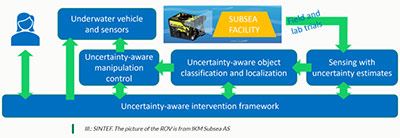
The main SAFESUB research challenge is how to make the methods robust to uncertainty by efficiently estimating – and utilizing – the aggregated uncertainty of AI (Artificial Intelligence) predictions throughout a sensing, perception, and control pipeline. By solving this challenge, we will reliably determine the risk associated with robotic interventions and thus safely increase the autonomy of interventions in complex and high-risk operations.
The project is funded by the Research Council of Norway (project number 338647) and co-funded by the industry partners, IKM Subsea and Imenco (2023-2026)
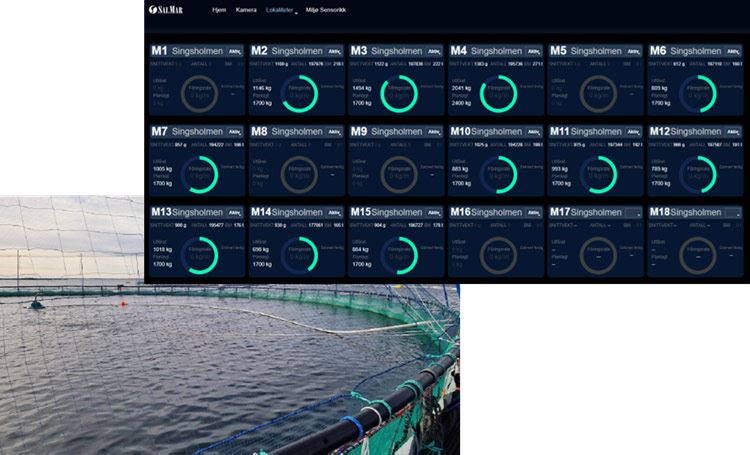
OptiVekst: Optimalisert tilvekst basert på forbedret beslutningsstøtte
The main objective of OptiVekst is to improve and optimize the management of feeding operations based on new knowledge and how the cage environment, fish health/welfare, handling and the origin of the fish affect the fish's appetite and growth.
Project co-financed by Fiskeri-og havbruksnæringens forskningsfinansiering AS, FHF and the industrial partners (2023-2025)
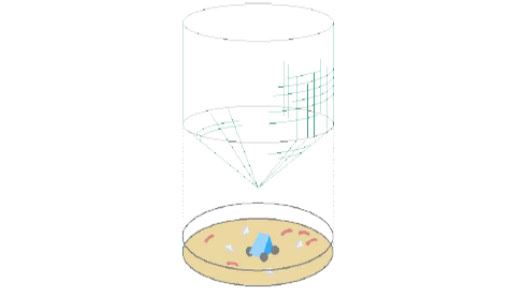
The main goal of the Crawler project was to develop a remotely operated vehicle moving on the seafloor (crawler) and investigate how this tool can be utilized in rearing or harvesting operations of benthic species. The project mainly targeted a concept where sea cucumbers are farmed below a traditional fish cage, but the technology is applicable for both rearing and harvesting of other creatures such as sea urchins that consume seaweed, scallops, pacific oyster (Crassostrea gigas), and more. The technology may also be applicable for other areas, such as monitoring of benthic conditions related to biology and ecology, sampling of sediments and removing garbage from the seafloor.
Financed by SINTEF Ocean (2023).
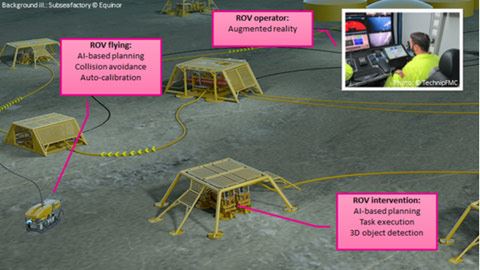
The main objective of SEAVENTION is to deliver research and competence building on robust subsea perception with active 3D sensors, automated planning for UUV intervention operations and augmented reality for UUV operator decision support.
The project is funded by the The Research Council of Norway (project number 280934) and the industrial partners Equinor, TechnipFMC, IKM, Oceaneering (2018-2021)
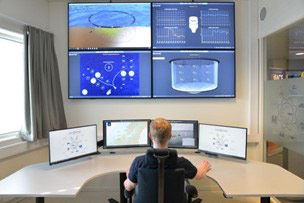
RACE ReDiFish – Laying the foundation of future aquaculture operations by developing remote control systems utilizing digital twins and evaluate impact of operations on fish.
The main objective of the RACE ReDiFish project is to contribute to the foundation of future aquaculture operations by developing remote control systems for Remotely Operated Vehicles (ROVs) and cranes, develop and show utilization of digital twins and evaluate impact of vessel operations on fish.
The project is funded by RACE (2022-2024).

Illustration of the OptiFe3D system. The information sources for the system are: 1) Individual feeding behaviour, 2) group feeding behaviour, 3) non-feeding behaviour, 4) pellet loss detection and 5) environmental data. These information sources form the basis for the recommendations from the OptiFe3D system.
The primary objective is to optimize the feeding process in salmon sea cages by providing feeding operators with decision support based on information from combining new methods for behavioural analysis with highly accurate pellet detection and environmental monitoring.
This will be realized through the secondary objectives:
1) Establish a solid dataset for MLmethods by gathering environmental, biological and sonar data from two sites over the course of a year.
2) Develop ML algorithm to monitor and identify behaviour of individual and fish shoals before, during and after feeding.
3) Develop algorithm to provide accurate estimates of pellet loss during feeding.
4) Integrating algorithms to create a decision support system for intensity and duration of feeding.
5) Evaluate the support system by assessing historical production data gathered during the project and customer trials.
Project co-financed by the Research Council of Norway and the industrial partners (2023 -2026).
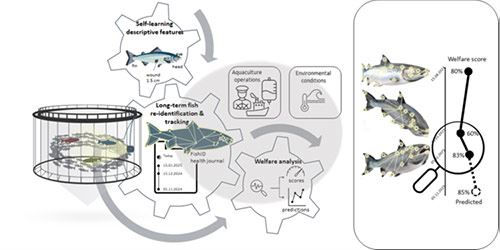
CAIge: Computer Vision and Artificial Intelligence based Salmon Identification and automated long-term welfare assessment in aquaculture net-pens.
The CAIge project represents a significant leap forward in the area of computer vision andaquaculture. By automating the process of welfare monitoring, it contributes to enhancing the health and well-being of farmed salmon, while also improving the efficiency and sustainability of farming operations.
Financed by the Research Council of Norway (2023 - 2027)
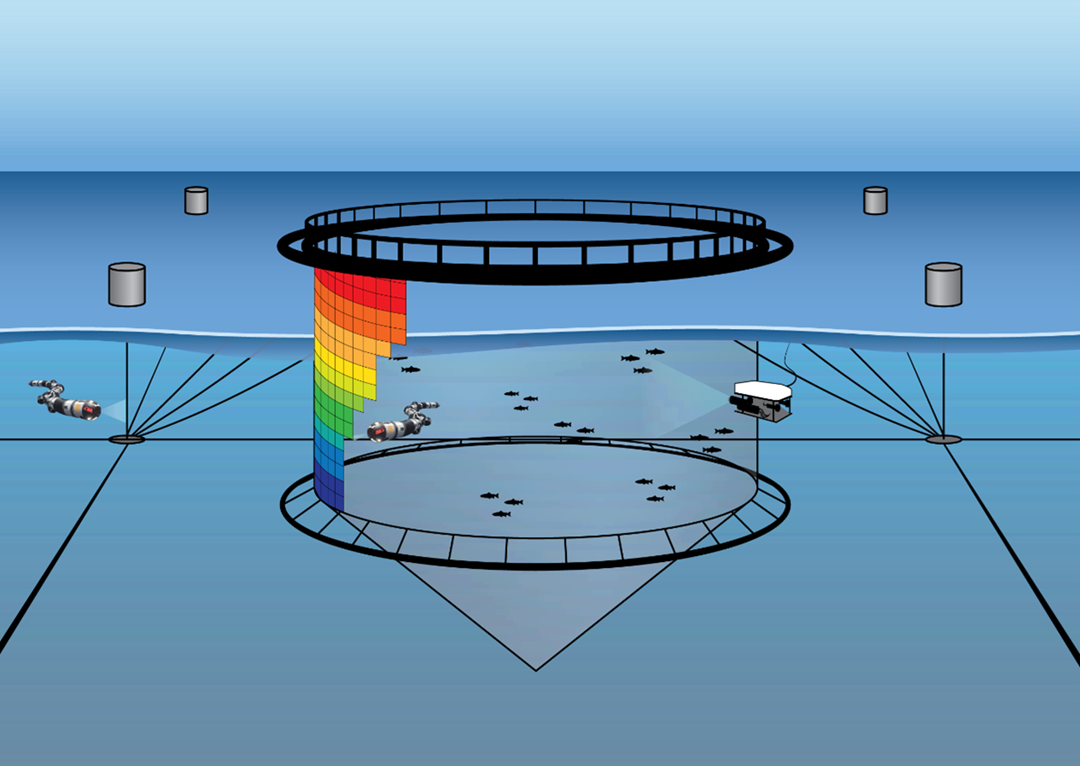
ResiFarm: Resilient Robotic Autonomy for Underwater Operations in Fish Farms
The primary objective of ResiFarm is to develop fundamental knowledge and technology for underwater perception and motion planning that enable resilient autonomy for Unmanned Underwater Vehicles (UUVs) during high-risk operations in complex fish farm environments.
Project co-financed by the Research Council of Norway and the industry partners (2021-2014)
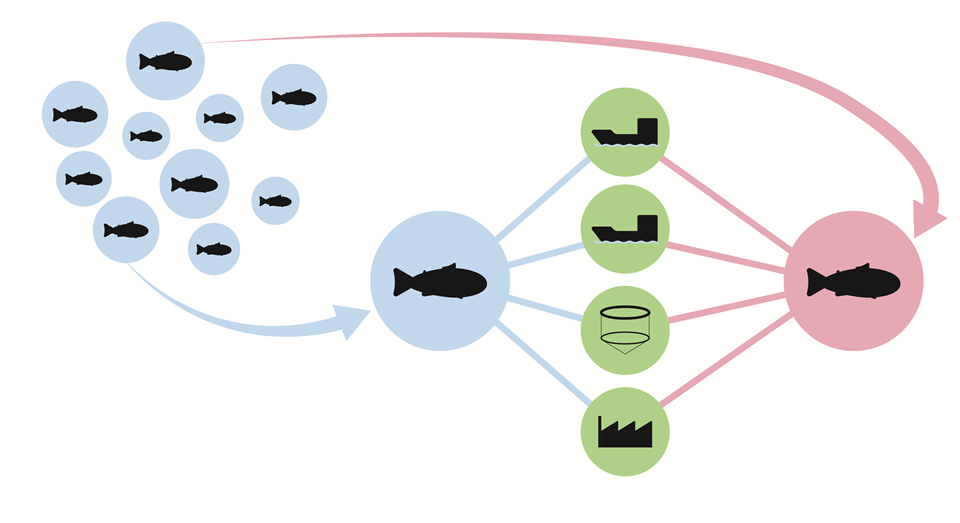
Aquagraph: Graph databases for visualisation and optimization of aquaculture production processes
The primary objective of AquaGraph is to create a software tool based on graph databases that enables the end-users to observe complex interconnections in their production data, which will make optimization of the production possible.
Project co-financed by the Research Council of Norway and the industrial partners (2021-2024)
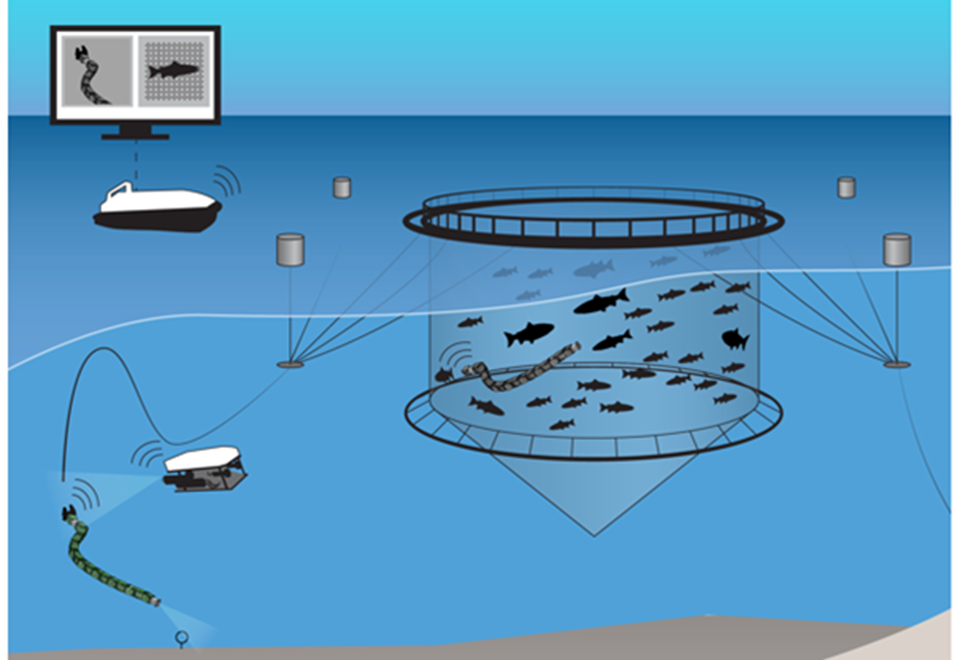
CHANGE: An underwater robotics concept for dynamically changing environments
The primary objective of the CHANGE project is to develop new control systems for UUVs that enable autonomous operations in highly complex and dynamically changing environments containing live fish and flexible structures.
The project is funded from Research Council of Norway through FRIPRO Young Research Talent program (2021-2024)
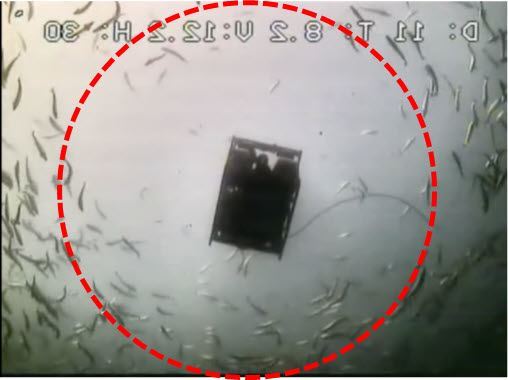
The primary objective of this project is to gain fundamental knowledge about methods to identify changes in behaviour of the fish and to develop new methods for the modelling and control of underwater vehicles enabling autonomous operations in fish farms by also considering interactions of the living fish with the used technology.
RACE funded project, SINTEF Ocean (2020-2024)
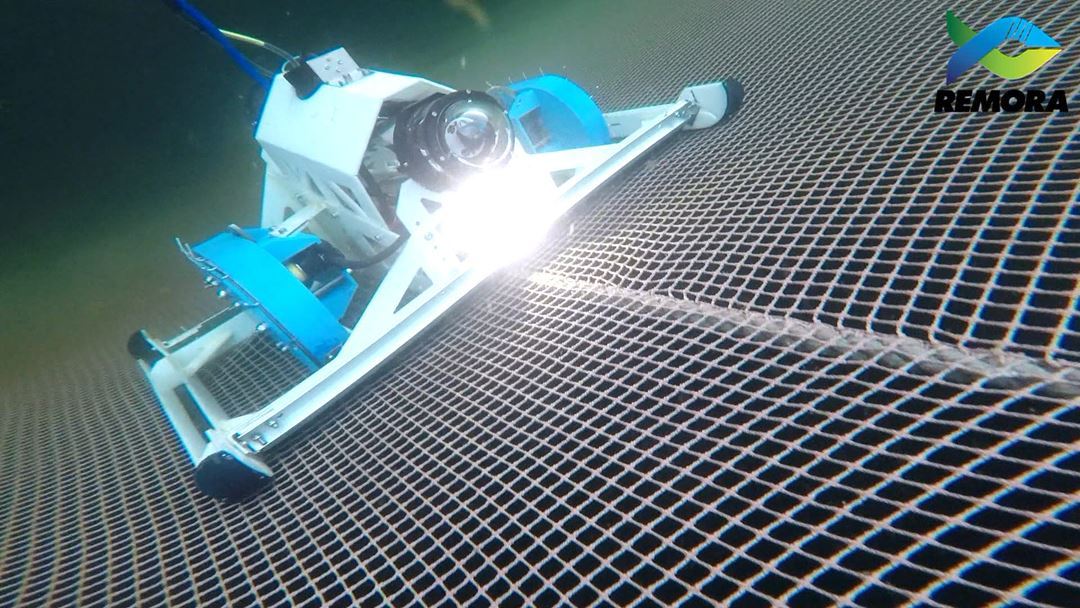
NetClean 24/7: Tetherless robot for biofouling prevention and inspection in salmon farming
The underlying idea of the project is to develop an autonomous and tetherless robot for prevention of biofouling and inspection of net integrity. The permanently installed robot will be small, energy efficient, have its own docking station, and conduct continuous net cleaning and inspection operations in fish farms.
Project co-financed by the Research Council of Norway and the industrial partners (2019-2022)
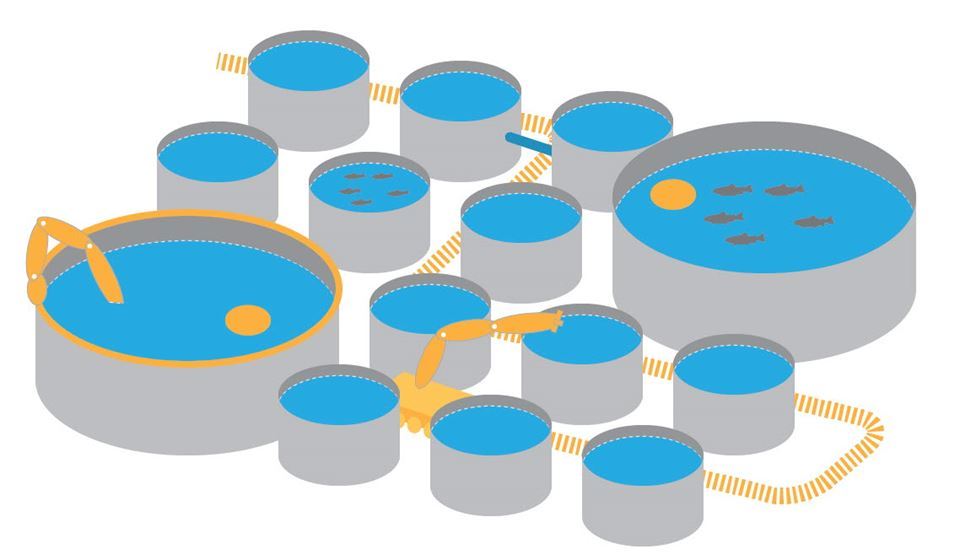
Autosmolt2025: Autonomous containment-and production systems for smolt and post-smolt production
The ultimate vision the project is to adapt and develop a holistic approach as a solution for the next generation of smolt production by applying the principles of Precision Fish Farming (PFF) at different stages of the smolt production cycle, thus bringing smolt production closer to realization within the framework of Industry 4.0.
Project co-financed by the Research Council of Norway and the industrial partners (2019-2022)
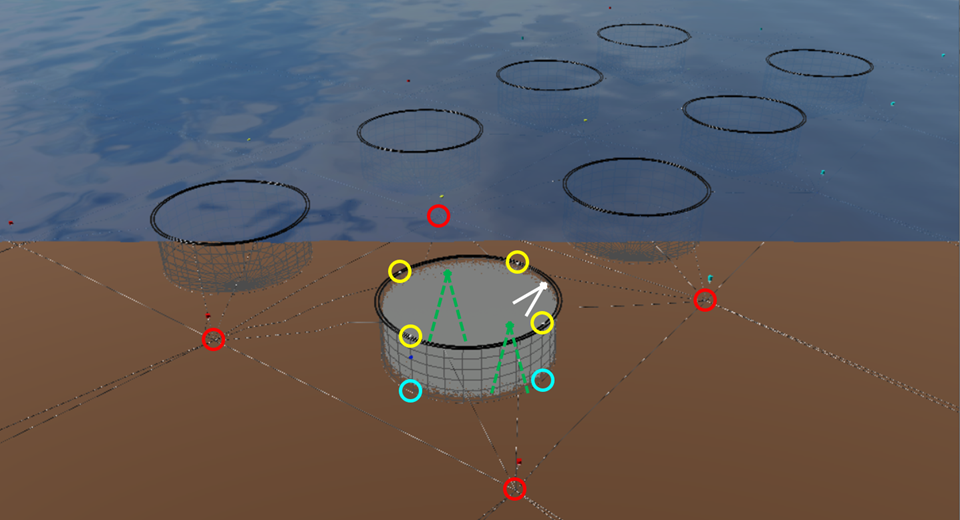
DigitalCage aims to develop a generalised interface for collection, storage, interpretation and visualisation of different monitoring sensor data and an integrated framework for modelling and simulation of net cage deformation and fish distribution with data assimilation.
RACE funded project, SINTEF Ocean (2020-2022)
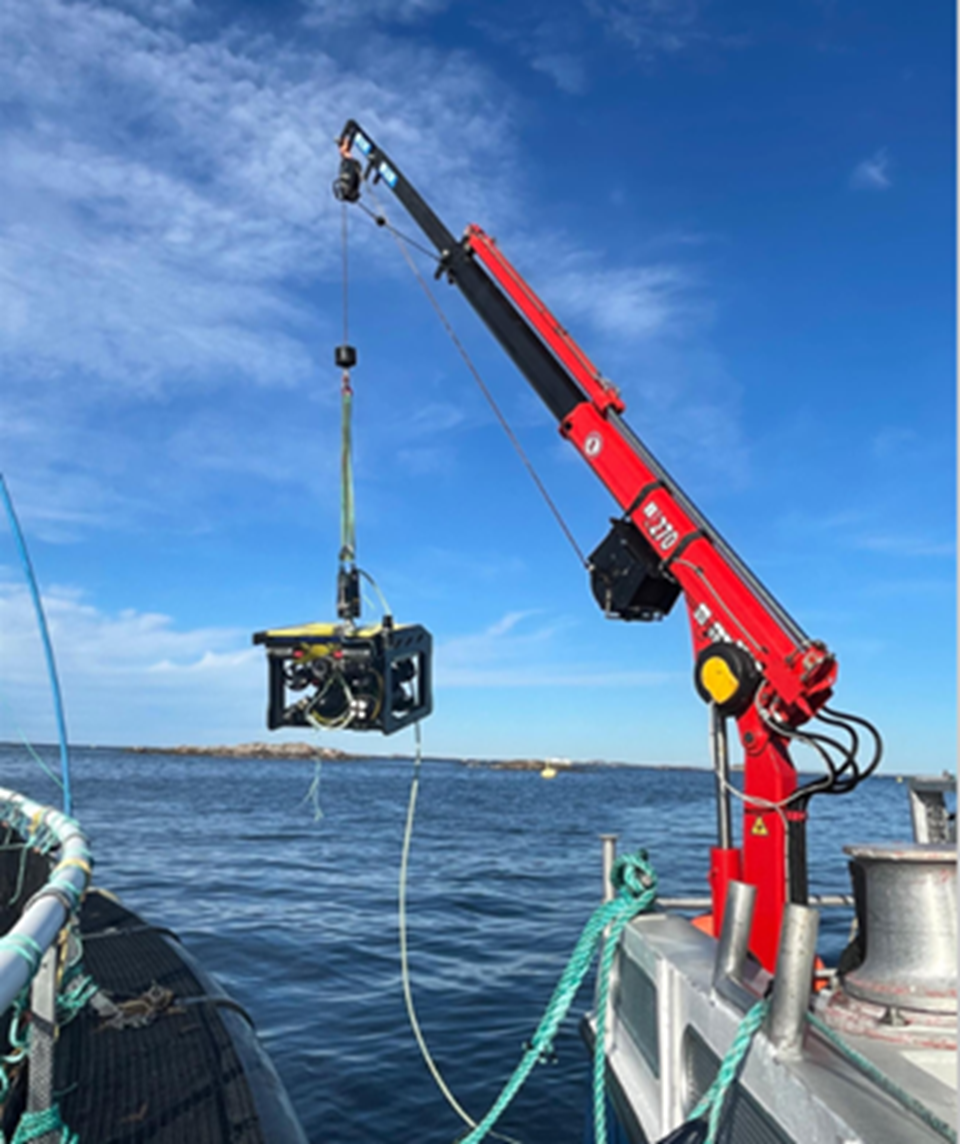
RACE Crane Operations in Aquaculture
The main goal of this project is to investigate how crane operations can be more automated in aquaculture domain in order to reduce the risk factors, and thus improve fish welfare.
RACE funded project, SINTEF Ocean (2020-2021)
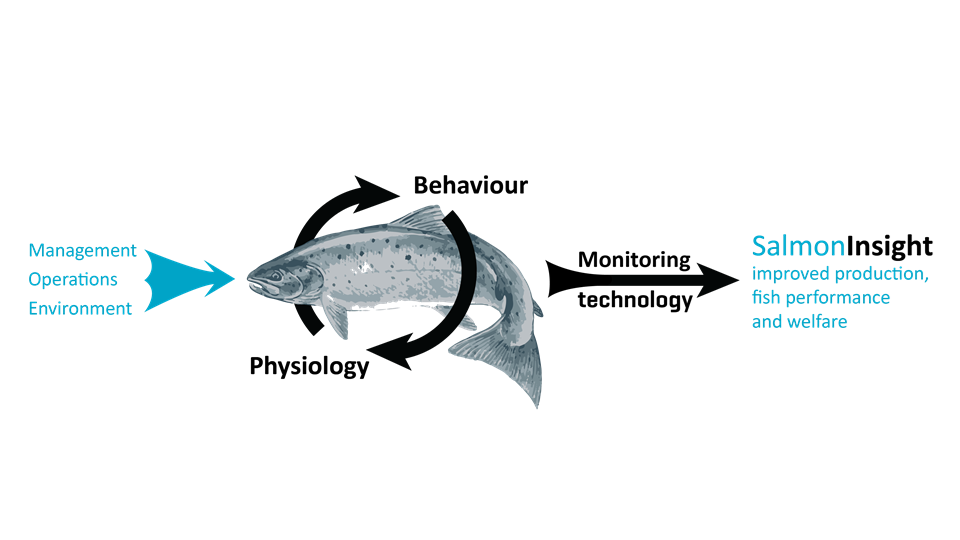
The project aims to provide new knowledge on how physiology and stress in salmon is reflected in observable behavioural expressions. This will form a foundation for developing future solutions for online monitoring of salmon in sea-cages during production and improve welfare and reduce stress in salmon production.
Project financed by the Research Council of Norway (2018-2022)
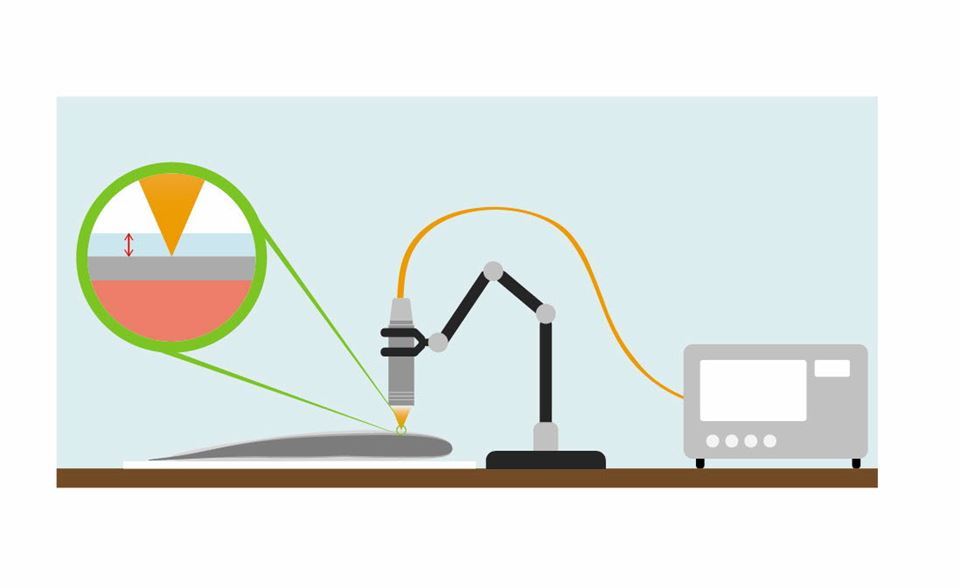
The project aim developing and validating new tools and methods for quantifying the thickness of the mucosal layer of Atlantic salmon in order to better understand what effect various aquaculture operations have on the mucosal layer.
RACE funded project, SINTEF Ocean (2020-2021)
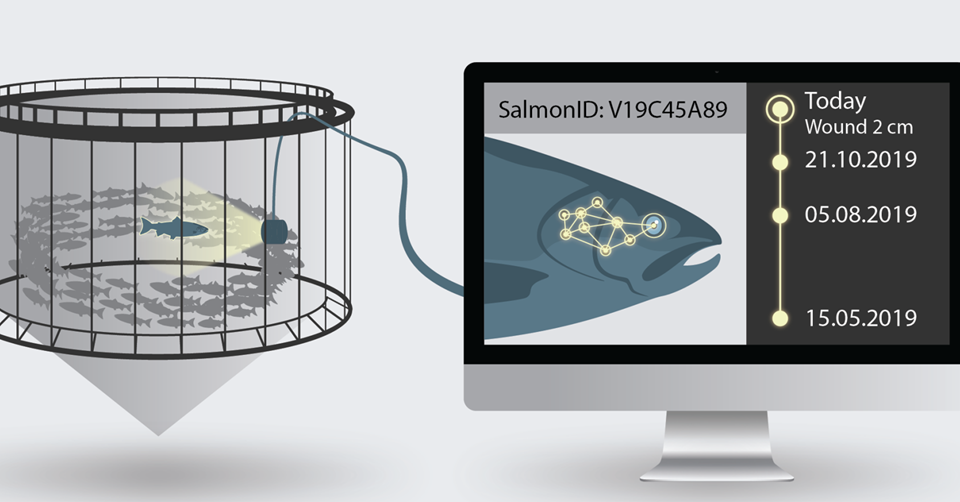
INDISAL: Enabling technology for identification of individual salmon in commercial fish-cages
The project aims to develop an individual biometric "finger-print" identification of each salmon in industrial sea based salmon farming, enabling the gathering of status information for observed individual salmons over time, through the use of underwater equipment and camera-systems along with advanced computer vision algorithms.
Project co-financed by the Research Council of Norway and the industrial partners (2018-2021)
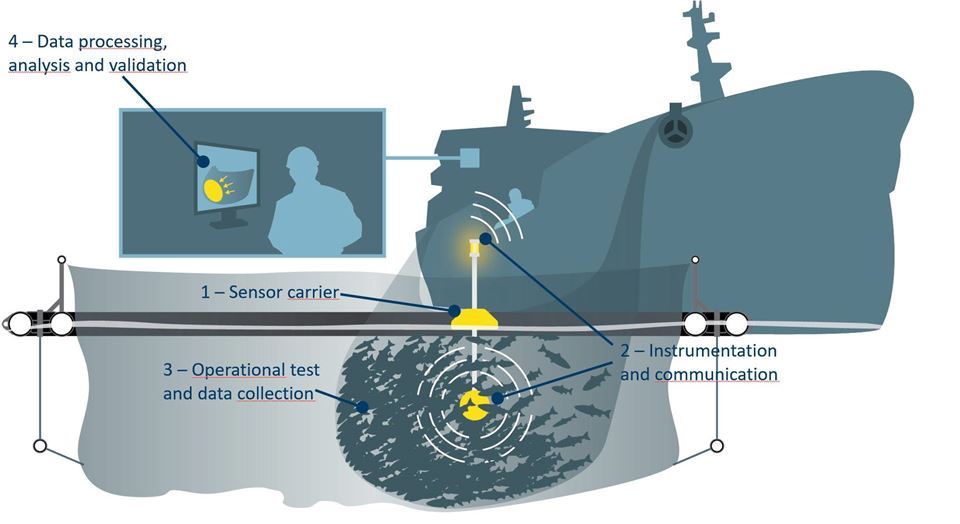
The project addresses one of the most demanding operations in aquaculture and aims to increase salmon farmers' control during crowding operations through development and validation of new and unique technology for data collection during crowding of salmon.
Project co-financed by the Research Council of Norway and the industrial partners (2018-2020)
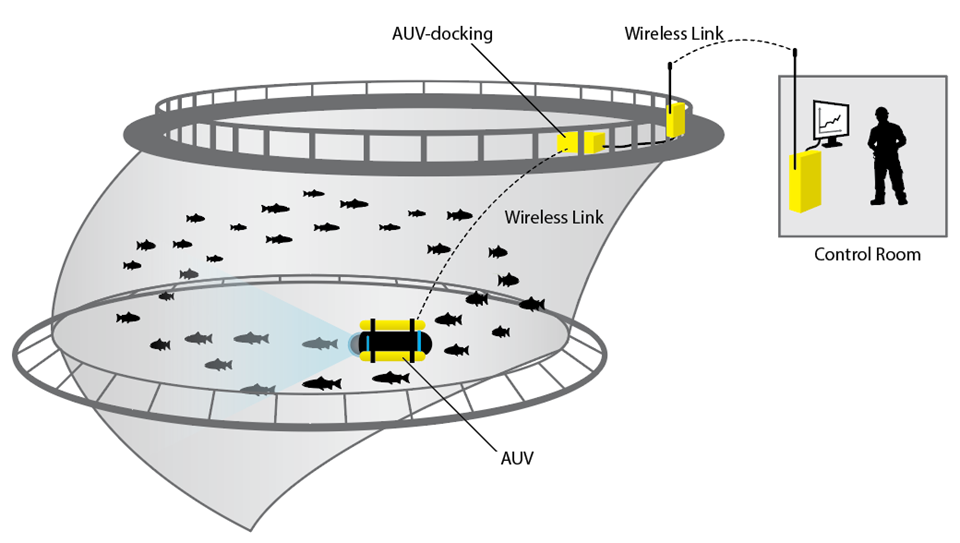
The main idea for the project is to use autonomous and non-tethered vehicles as a carrier of sensor systems for data acquisition, where the data are transferred from sea-based fish cages to a centralized land base.
Project co-financed by the Research Council of Norway and the industrial partners (2017-2019)
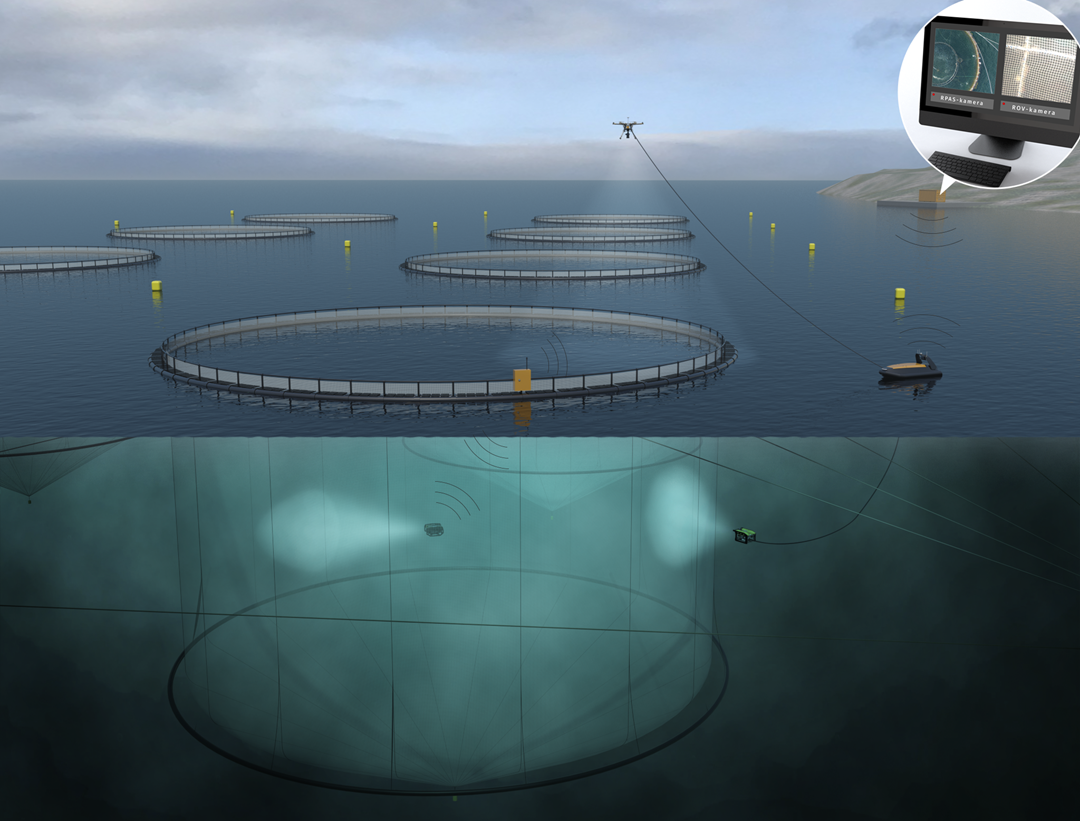
Artifex: Remotely controlled operations without personnel on site
The ARTIFEX project develops game changing technologies for remote and autonomous operations at sea-based fish farms. The project results are yielding leading products and services for aquaculture, which is the fastest growing food producing business worldwide. The main objective is to develop robots for remote and autonomous inspection, maintenance and repair operations.
Project co-financed by the Research Council of Norway and the industrial partners (2016-2019)
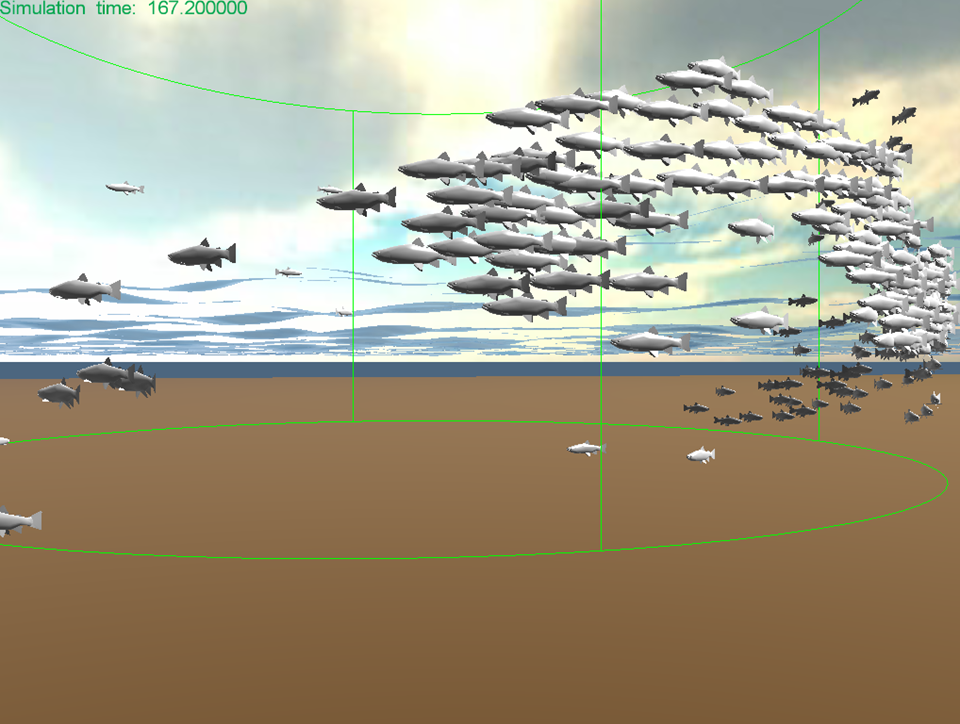
Bioracer: Biomass and Feeding technologies
The project has been targeted knowledge about biomass and feeding in commercial salmon farming by developing methods for monitoring feeding and biomass-related condition, developing models for numerical description of biomass and feed distribution in cages, integrating measurements and models in tools for operational decision support, and develop methods for observing current conditions inside cages.
RACE funded project, SINTEF Ocean (2015-2018)
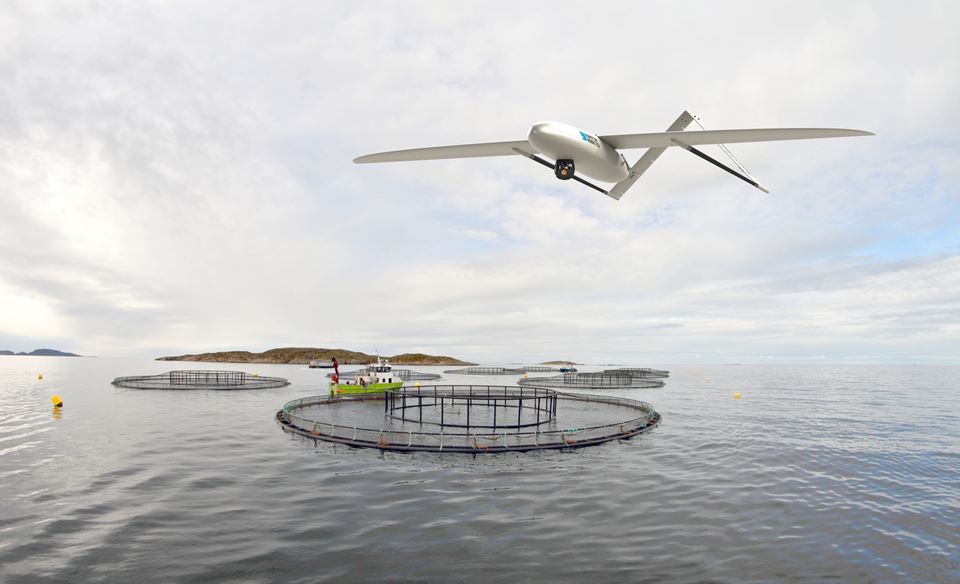
SENSODRONE evaluated the potential of using remotely piloted air systems in the maritime sector. Craft and sensors must be adapted to maritime conditions in order to collect high quality data. Sensor types included stills cameras, video cameras, IR cameras, as well as laser based sensors and AIS (Automatic Identification System).
Project co-financed by the Research Council of Norway and the industrial partners (2013-2015)
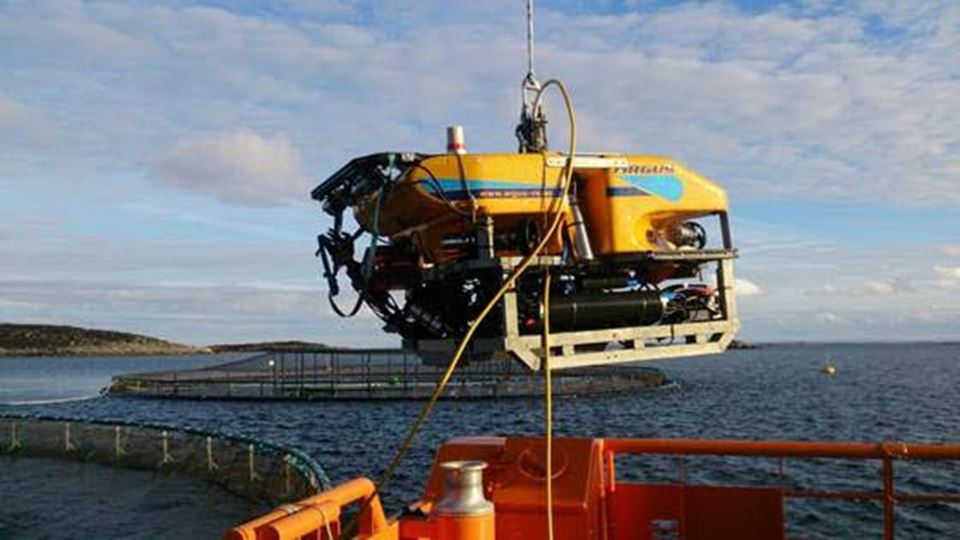
The main goal of the project has been to develop novel methods and technology to demonstrate ROV as a tool for use in net operations for cage-based fish farms, including washing, inspection and repair of nets.
Project co-financed by the Research Council of Norway and the industrial partners (2012-2015)